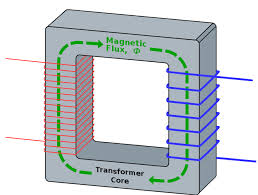There's a lot of documents that talks about dimensioning of the transformer for a SMPS power supply (in this case one quadrant only is not of my interest).
this site cites the following:
The main constraint in all cases (except for saturable inductors) is that peak magnetic flux density Bmax should not approach the core material's saturation flux value Bsat.
(more)
Contrary to popular misconception, Bmax does not depend on the magnetic material properties or air gaps. It does not depend on the transferred power neither. However, for thermal reasons, we have to limit ohmic losses in the wires. Most textbooks provide formulas for estimation of the core size based on the product of magnetic cross-section area by the window area available for the winding. Unfortunately, this method is not very helpful because these formulas are based on pretty much arbitrary selection of current density and on an assumption of a certain window utilization (fill) factor.
So, I calculated the Bmax for my project, and it gives-me similar results to that of poweresim.com. But with the AwAe method it requires more than 4 times the core size!
Anyway, the Bmax formula being close to the results, it does not have the current included in the formula. So that any power (respecting the Vpk and f in the formula) could be used with the same Ae transformer.
Is the core size not dependent on H, just B? That is, having enough space for windings for the projected currents/potentials and getting Bmax below saturation Bsat, and dis-considering hysteresis, eddy-current losses, what should I consider?
If not what should I consider then? If I try to calculate H, it will give-me values really above saturation (from B-H curve), for near most materials, so I think thats wrong.

